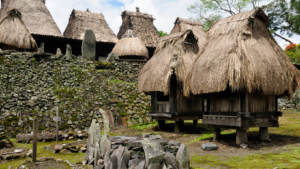Culture isn’t just an abstract concept; it’s the vibrant, pulsating heart of every nation. It’s the shared stories, traditions, and values that bind people together, painting a vivid picture of their collective identity. From the rhythmic beats of traditional music to the rich flavors of local cuisine, culture is an intricate tapestry woven through generations.
In this exploration, we’ll dive into the fascinating world of culture of a country. We’ll peel back the layers of history, art, and customs that shape a nation’s soul. So, buckle up for a journey of discovery where we’ll traverse the diverse landscapes of culture, unearthing the unique elements that make each country truly distinct.
Culture of a Country
 Culture serves as a lens, providing an insightful perspective into a nation’s identity. This section delves deeper into understanding how this complex system defines the culture of a country and identifies the main elements that make it up.
Culture serves as a lens, providing an insightful perspective into a nation’s identity. This section delves deeper into understanding how this complex system defines the culture of a country and identifies the main elements that make it up.
Engaged in the exploration of cultural dynamics, this section illuminates the crucial role of language and non-verbal communication in shaping the culture of a country.
Role of Language in Shaping Culture
Language, as an integral part of culture, not only facilitates communication but also shapes thought and behavior. It transcends the realm of merely being a tool for communication, becoming an emblem of identity. For clarity, consider the influence of Sanskrit in shaping the diverse yet unified Indian culture. It’s provided a framework for classical literature, the codification of laws, and the philosophical discourse that underpins societal norms. Similarly, French language, with its emphasis on formality and etiquette, reflects the French culture’s importance on manners and respect.
Non-verbal Communication
Non-verbal cues constitute a significant portion of human interaction. These cues include facial expressions, gestures, and body language, often speaking volumes without uttering a single word. Subtle nodding in Japan, for instance, indicates attentiveness and respect during conversations. Similarly, Italians use a broad range of hand gestures in day-to-day interactions, each gesture carrying specific meanings. Non-verbal communication, therefore, reinforces language in translating culture, adding depth and nuance to interpersonal interactions. It’s evident that this form of communication significantly contributes to cultural experience, shaping and reflecting societal values and norms.
Social Structures and Hierarchies in Culture
 Culture’s anatomy extends beyond religion and attitudes, embedding deeply into societal structures and hierarchies as well. It molds intricately into the fabric of social hierarchy and family units, vestiges of culture that drive a nation’s development and global image.
Culture’s anatomy extends beyond religion and attitudes, embedding deeply into societal structures and hierarchies as well. It molds intricately into the fabric of social hierarchy and family units, vestiges of culture that drive a nation’s development and global image.
Social hierarchies, as defined by societal ranks and classes, play a pivotal role in shaping a culture. In cultures with strict social stratifications, such as the caste system in India, rituals, codes, and traditions vary significantly based on one’s societal rank. Conversely, cultures with less pronounced hierarchies, like Finland, often promote values such as equality and uniformity.
Take, for instance, the social structure of Japan, rooted in the concept of ‘wa’, signifying harmony. Japan’s societal regulatory system, known for its emphasis on homogeneity, prioritizes harmony and balance over individualistic pursuits, gravely influencing Japan’s societal festive traditions, language, and even business etiquette.
Role of Family Units in Culture
 Family units, often the first modicum of a societal structure one encounters, wield substantial influence in shaping cultural norms and values. In cultures valuing tight-knit family structures, such as those in Africa and South Asia, respect for elders, compliance with familial roles, and a focus on collective well-being often become inherent cultural values. Contrarily, in cultures emphasizing nuclear family or individualistic concepts, like the United States and Scandinavia, independence, personal growth, and individual liberties rise to the fore.
Family units, often the first modicum of a societal structure one encounters, wield substantial influence in shaping cultural norms and values. In cultures valuing tight-knit family structures, such as those in Africa and South Asia, respect for elders, compliance with familial roles, and a focus on collective well-being often become inherent cultural values. Contrarily, in cultures emphasizing nuclear family or individualistic concepts, like the United States and Scandinavia, independence, personal growth, and individual liberties rise to the fore.
Such cultural values could also morph in response to socio-economic changes. China stands as a prime example, transitioning from large, close-knit families, commonplace during its agrarian past, towards smaller, nuclear families – mirroring its shift towards urbanization.
Hence, from hierarchical layers to familial canvases, social structures influence cultural norms, behaviors, and identity narratives, further showcasing the intricacy and complexity entwining culture and society.

